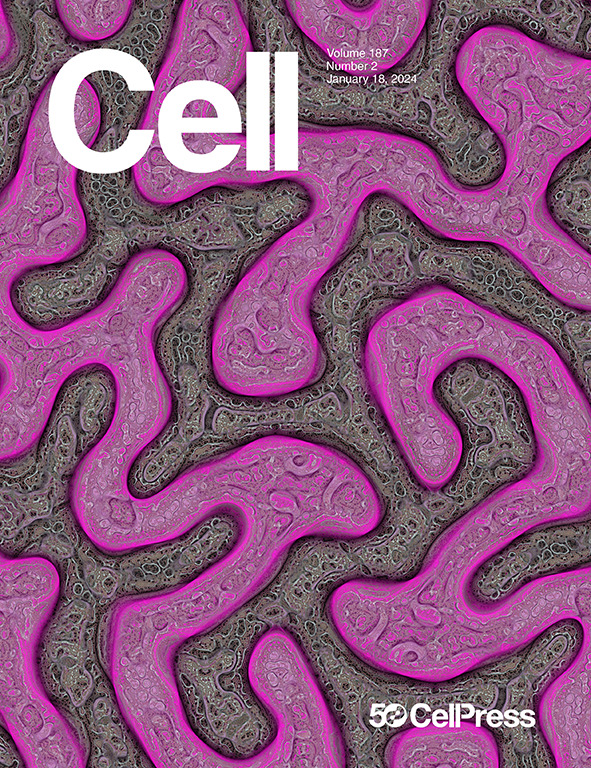Procr+ chondroprogenitors sense mechanical stimuli to govern articular cartilage maintenance and regeneration
IF 42.5
1区 生物学
Q1 BIOCHEMISTRY & MOLECULAR BIOLOGY
引用次数: 0
Abstract
Protein C receptor+ (Procr+) cells were identified as stem or progenitor cells in multiple adult tissues. However, whether mechanical stimuli fine-tune their activation and differentiation remain unknown. Here, we found rare Procr+ cells in the superficial layer of tibial articular cartilage and meniscus, which keep replenishing chondrocytes in postnatal knee joints. Mechanical stimulation by forced running significantly increased the frequency of Procr+ cells, whereas mechanical unloading by tail suspension showed opposite effects. Osteoarthritis (OA) activated Procr+ cells to repair cartilage erosion, whereas genetic ablation of Procr+ cells accelerated OA progression. Pharmacological or genetic inhibition of the mechanosensor Piezo1 significantly blunted cartilage regeneration by Procr+ cells and exacerbated OA. In contrast, intra-articular administration of a Piezo1 agonist ameliorated OA symptoms. Purified mouse or human Procr+ superficial cells robustly repair articular cartilage after expansion and in vivo transplantation. Together, we discovered a mechanosensitive chondroprogenitor population indispensable for articular cartilage maintenance and regeneration.

Procr+软骨祖细胞感知机械刺激来控制关节软骨的维持和再生
蛋白C受体+ (Procr+)细胞在多个成体组织中被鉴定为干细胞或祖细胞。然而,机械刺激是否微调它们的激活和分化仍然未知。我们在胫骨关节软骨和半月板的浅层发现了罕见的Procr+细胞,它不断补充出生后膝关节的软骨细胞。强迫跑步的机械刺激显著增加了Procr+细胞的频率,而悬挂尾巴的机械卸载则表现出相反的效果。骨关节炎(OA)激活Procr+细胞修复软骨侵蚀,而Procr+细胞的基因消融加速了OA的进展。药理或遗传抑制力学传感器Piezo1显著减弱Procr+细胞的软骨再生并加重OA。相反,关节内注射Piezo1激动剂可改善OA症状。纯化的小鼠或人Procr+浅表细胞在扩张和体内移植后对关节软骨具有强大的修复作用。我们一起发现了一个对关节软骨维持和再生不可或缺的机械敏感的软骨祖细胞群。
本文章由计算机程序翻译,如有差异,请以英文原文为准。
求助全文
约1分钟内获得全文
求助全文
来源期刊

Cell
生物-生化与分子生物学
CiteScore
110.00
自引率
0.80%
发文量
396
审稿时长
2 months
期刊介绍:
Cells is an international, peer-reviewed, open access journal that focuses on cell biology, molecular biology, and biophysics. It is affiliated with several societies, including the Spanish Society for Biochemistry and Molecular Biology (SEBBM), Nordic Autophagy Society (NAS), Spanish Society of Hematology and Hemotherapy (SEHH), and Society for Regenerative Medicine (Russian Federation) (RPO).
The journal publishes research findings of significant importance in various areas of experimental biology, such as cell biology, molecular biology, neuroscience, immunology, virology, microbiology, cancer, human genetics, systems biology, signaling, and disease mechanisms and therapeutics. The primary criterion for considering papers is whether the results contribute to significant conceptual advances or raise thought-provoking questions and hypotheses related to interesting and important biological inquiries.
In addition to primary research articles presented in four formats, Cells also features review and opinion articles in its "leading edge" section, discussing recent research advancements and topics of interest to its wide readership.
 求助内容:
求助内容: 应助结果提醒方式:
应助结果提醒方式:


